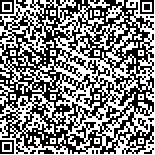| This article has been:Browse 2443Times Download 1969Times |

scan it! |
|
|
| DOI:10.13522/j.cnki.ggps.2019119 |
|
| Research on Optimization Algorithm of Fine Leaf Crop Coverage Based on Non-vertical Shooting |
|
ZHANG Hui, WU Pinghui, ZHANG Xin, SUN Tiejun, XUE Xuzhang, ZHENG Wengang
|
|
1. School of Electronic Information Engineering, Hebei University of Technology, Tianjin 300401, China;2. Beijing Research Center for Information Technology in Agriculture, Beijing 100097, China;3. Beijing Grass Industry and Environment Research Center, Beijing Academy of Agriculture and Forestry, Beijing 100097, China
|
| Abstract: |
| 【Objective】 The purpose of this paper is to explore the optimization algorithm of fine leaf crop coverage calculated through non-vertical photography and analyze the influence of non-vertical photography on crop coverage calculation results.【Method】This paper took Carex breviculmis and Zoysia japonica Steud as experimental objects in the open environment of Xiaotangshan Base Grass Research Center in Beijing, and obtained images from three shooting angles of 45°, 60° and 90° (angle with ground). To analyze the influence of different shooting angles on the measurement accuracy of Carex breviculmis coverage, and the relationship between non-vertical shooting and coverage under vertical angle was studied, an improved K-means method using adaptive weight particle swarm optimization (APSO) was proposed to conduct image segmentation. Firstly, the RGB image of grass was transformed into HSV color space. In the HSV color space, the APSO algorithm was used to search the subspace of the global pixel solution. The global optimal solution was found by iterative search to determine the best initial cluster center. Secondly, the k-means algorithm was used to cluster the pixels of different objects to obtain the result of segmentation of the canopy layer. Finally, the segmentation result was optimized by the morphological filtering method. 【Result】 When shooting vertically, the overall relative errors of the two varieties calculated by the traditional k-means algorithm were 32.89% and 34.37% respectively, while the overall relative errors of the two varieties calculated by this algorithm were 11.23% and 15.85% respectively. Compared with k-means algorithm, the algorithm in this paper has good environmental adaptability and high accuracy. Under the condition of non-vertical shooting, the algorithm could overcome the problem of uneven color distribution of images caused by multi-angle shooting, and effectively segment the area of the canopy layer. The average error of estimated value and true value of 90° coverage was 3.27%, and the average error of 60° was 4.61%. The average error of 45° was 5.70%. As the shooting angle decreases, the average error increases slightly, but all of them are less than 6%.The coverage calculated at non-vertical angles has a significant linear relationship with that at vertical angles. 【Conclusion】 The improved K-means method using adaptive weight particle swarm optimization (APSO) can improve the accuracy of crop coverage obtained by non-vertical photography. |
| Key words: image segmentation; K-means algorithm; PSO optimization algorithm; multi-angle; crop coverage |
|
|